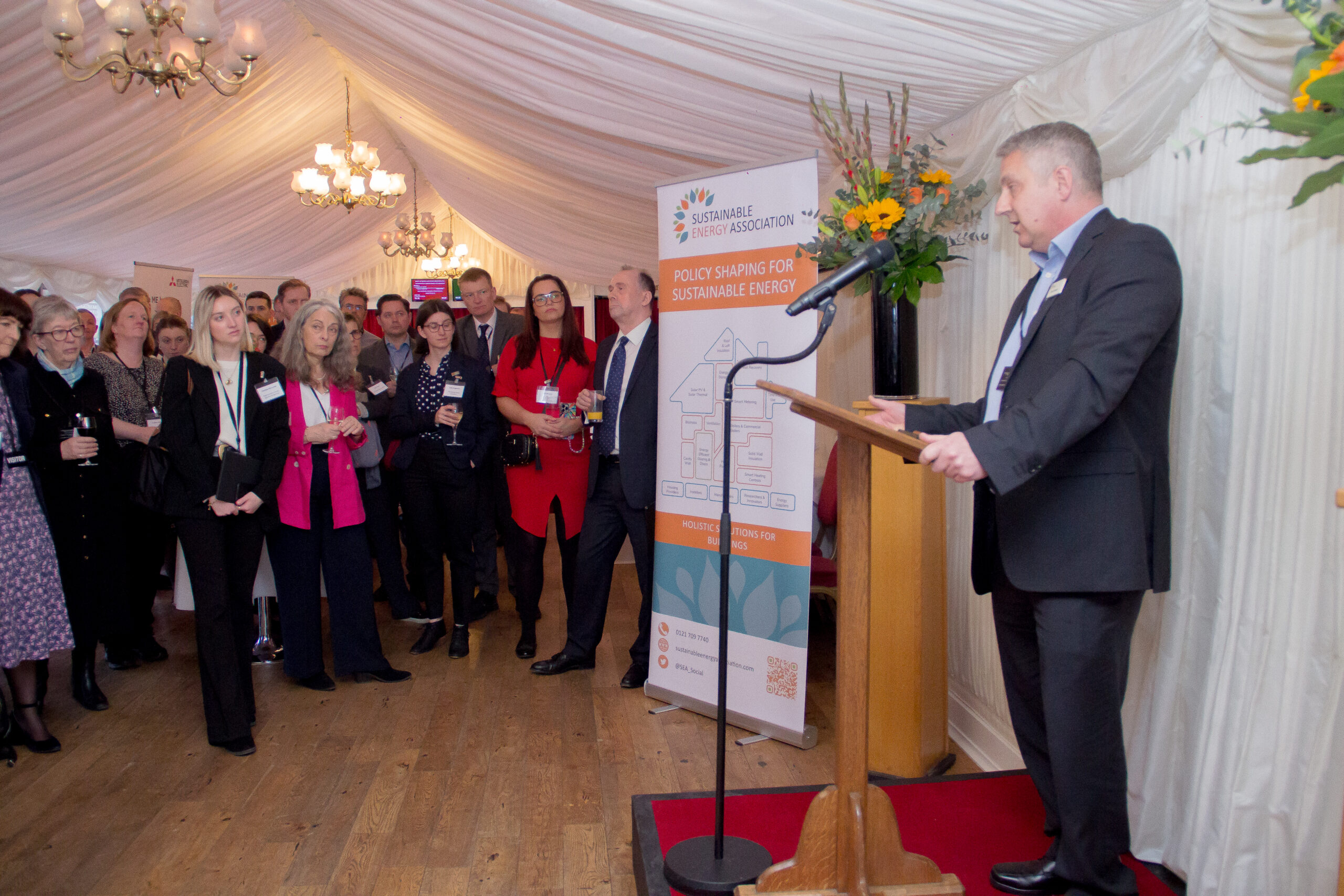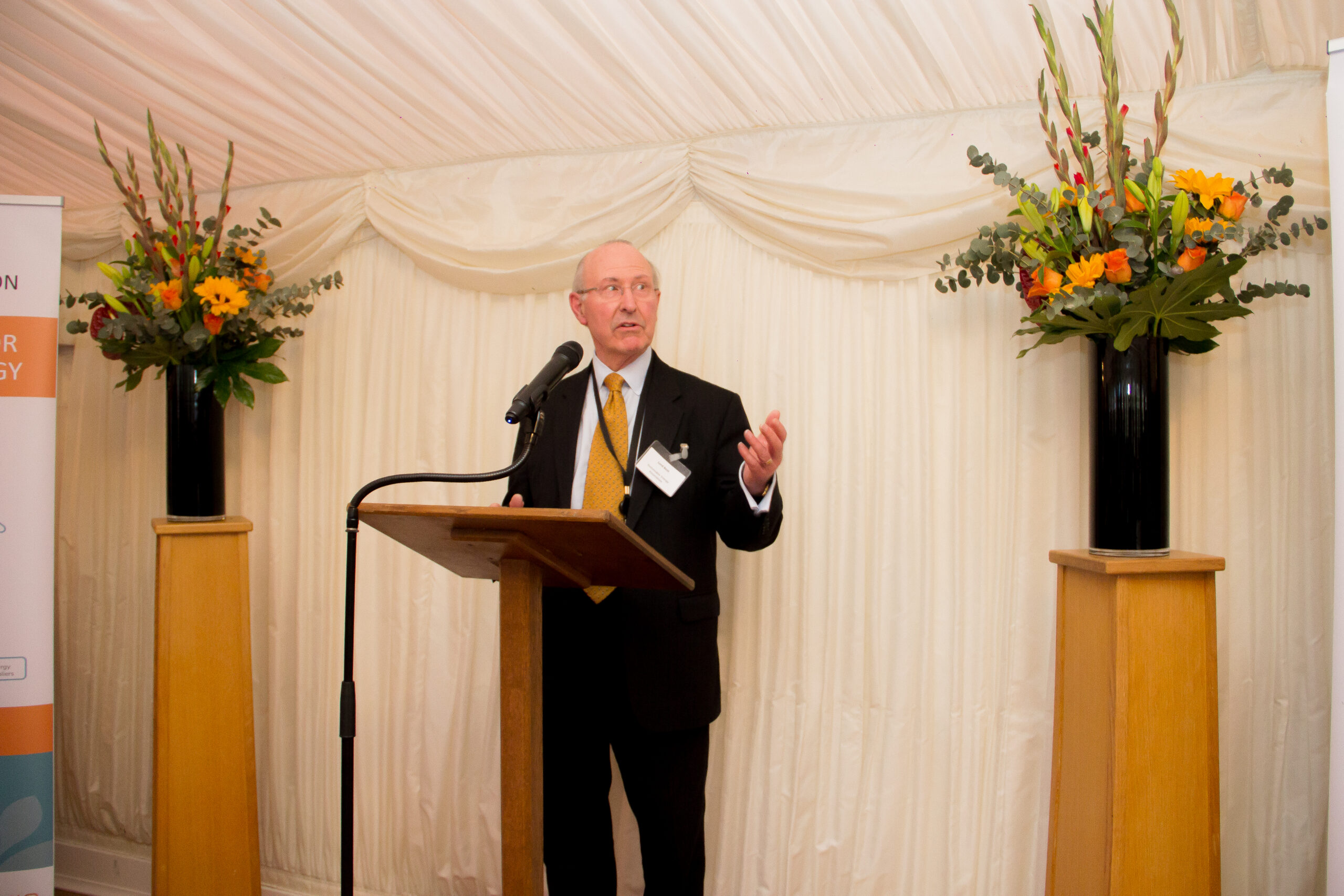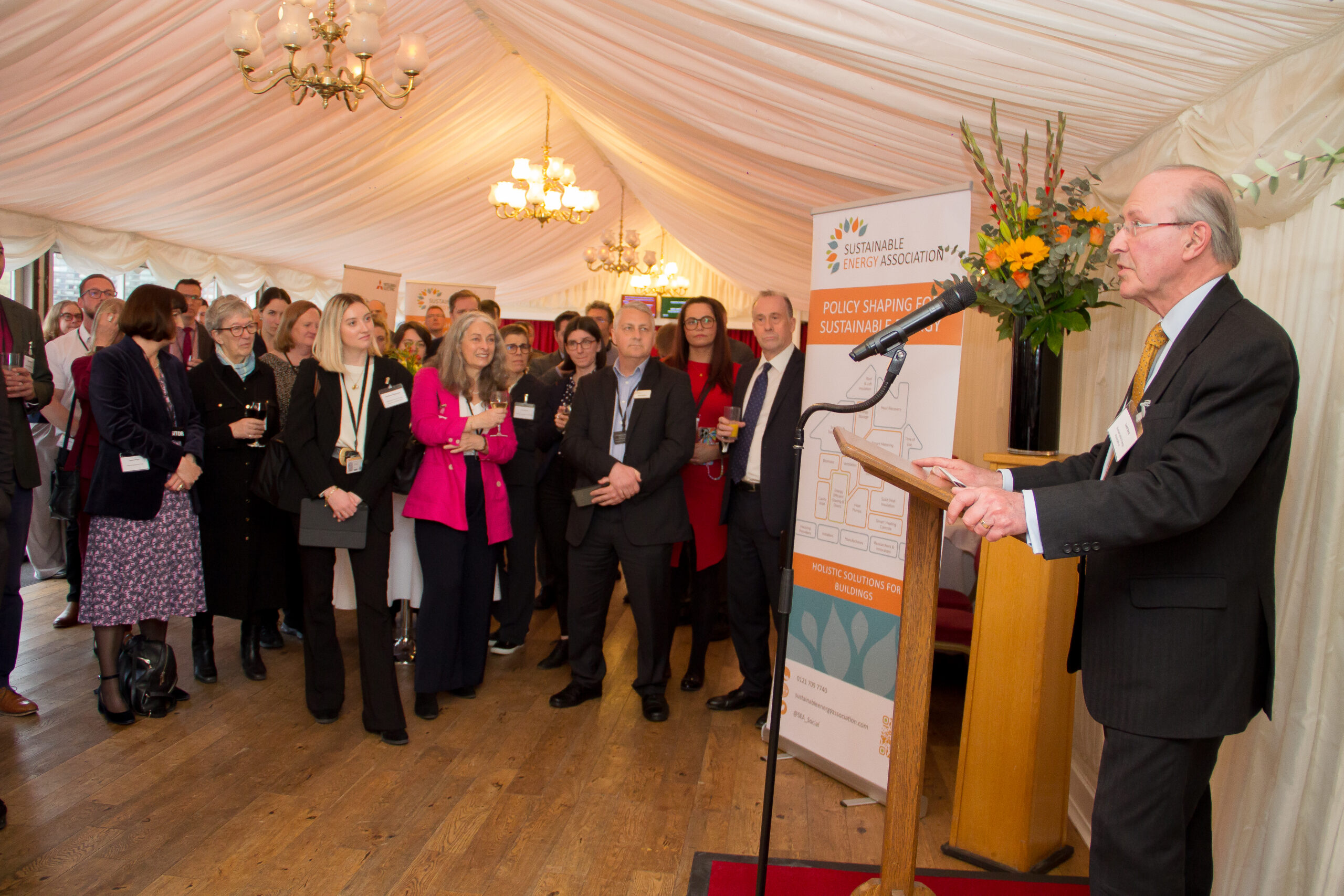Our Interim Chief Executive Dave Sowden marked the 2024 SEA Annual Parliamentary Reception with a speech focused on how to create buildings fit for the future.
Held in the House of Lords on 22nd April 2024, this year’s reception reflected on the progress made so far, and what must still be done to decarbonise the nation’s building stock. Central to discussion was the need for greater investor confidence in policy framework, created through long-term, joined up policies alongside a firm date for the phase out of fossil fuel heating systems.
Without a resurgence of confidence in the direction of the insulation, draught-proofing, ventilation, heating and power industries, the UK risks missing its climate targets.
Thank you to this year’s sponsor for making the day possible.

Read our Interim Chief Executive Dave Sowden’s full speech below:
Thank You Lord Best.
In addition to echoing your thanks to the Minister and to our sponsor, Mitsubishi Electric, I’d also like to thank you for your own support and Counsel to me and our last 2 CEOs, for what is now six years as our President, and of course to all our members and other honoured guests for their continued support, and last but by no means least, to the SEA team I inherited a few months ago. Everyone speaks exceptionally highly of Ben Copson, Girvin Gill and Sandra Morris, and I thank them for their hard work in keeping the wheels turning, and of course for supporting and helping me get back up to speed over the last few weeks.
20 years ago yesterday, a new industry body called The Micropower Council was launched. I was privileged then to be invited by the late Lord Ezra to lead it. Initially focussed on small-scale production of sustainable electricity, it expanded rapidly to take on sustainable heating and fabric energy efficiency until a decade later, its name no longer fitted what it did. It was rebranded in 2014 to become today’s Sustainable Energy Association. It has now completed another decade under that name. After a personal break of 8 years in this role, it’s good to be back with old friends and new. I’m particularly pleased to see the SEA is still at the heart of championing sustainable energy in and from Buildings after all these years. Happy 20th Birthday, SEA.
OK – all very interesting but why the history lesson – apart from indulging me in some personal nostalgia, that is.
Well, I recount this story because I think it’s helpful to look back across two decades of policy development so we can celebrate what’s gone well, review where progress has been slower and importantly, learn the lessons from both as we look ahead to what remains yet to be done.
There has been much to celebrate over those two decades.
- We have a Climate Change Act, now strengthened in ambition for net zero in 2050. This has been pivotal in driving government consideration sector by sector. Observing low carbon policy development over my 30 years in the industry I can honestly say I don’t think we would have anything like the focus on net zero without these legally binding targets.
- We now have Building Regulations that require a much tighter fabric standard for new buildings than ever before, set to tighten further next year with the phasing out of fossil fuel heating in new builds altogether.
- We have another law designed to make significant progress in ending the scourge of fuel poverty by the end of this decade, – something brought into even sharper focus in the recent energy pricing crisis, as well as Awaab’s law to tackle the very worst quality housing in the rented sector.
- We have and have had a range of tax breaks, grant schemes, the Feed-In-Tariff and Renewable Heat Incentive, installer training initiatives and incentives as well as regulatory change for installer competencies, and other measures to encourage the uptake of a range of building-level technologies across a broad base of different market sectors.
- Moreover, we now see much of this being drawn together so we ensure the right blend of measures is deployed in each case, more attention paid to the customer journey, and importantly the financing of building retrofit considered more carefully. The establishment of bodies such as the National Retrofit Hub aims to help the market organise a holistic approach in the future.
- We now understand better the innovation process, and the work done by Innovate UK and the establishment several years ago of the Energy Systems Catapult are examples of steps in the right direction for helping start-ups, inventors and other innovators, to bring solutions to market.
These are all welcome, of course, but we still need to go much, much further, as highlighted by last year’s progress report by the Committee on Climate Change and the recent publication by National Energy Action on the remaining scale of the fuel poverty challenge. I’m not going to take up valuable time listing in detail what we think still needs to change, as there is an abundancy of resources on our website with more of that detail, but I would like to draw out two important points of principle:
The first is investor confidence in the policy framework. One study suggests overall project costs for decarbonising industries can be reduced by up to 20% solely by the reduction in cost of capital that follows investors being more confident in long-term stable policy. The SEA is therefore doing some ground-breaking policy work this year in two areas:
- Firstly, we will generate new policy ideas on the scope to flip the principle of retrofit incentives for buildings from being short-term (by which I mean five-yearly or less) to long-term (by which I mean 15-25 yearly). Retrofit policy is almost entirely driven by schemes that last five years or less. This means they are dependent on funding envelopes that are wrapped up in the political cycle. We will propose alternatives that borrow ideas from the relative successes of the solar PV and offshore wind industries over the last decade, where the policy framework has been characterised by long-term incentives that reward in-use performance on an ongoing basis across a period of between 15 and 25 years, thus out-surviving several electoral cycles. This attracts investment because the policy framework is stable and therefore bankable. We will see what lessons can be learned from these for the future of retrofit energy efficiency policy.
- Secondly, the heating sector has no firm date for the eventual phase out of fossil fuels in replacement heating systems. Government has an ambition for this of 2035, but that is not as investable as a legislated requirement, the like of which is about to be established in new buildings from next year, and for which the heating market is now rapidly gearing up. The absence of this clarity in retrofit heat policy leaves all parts of the heating industry in limbo. Today’s gas boiler manufacturers face uncertainty in the short-term over the glide path dates for phasing out fossil fuel boilers and therefore when to invest in replacements. Both established and innovating interests in electrification of heat face uncertainty on the flip side. We will therefore be bringing forward proposals for a “top-down” progressively tightening heat decarbonisation standard for retrofit heating systems that complements the range of bottom-up measures already in the pipeline. This will provide a similar impetus as the carbon targets themselves – providing a clear and staged glide-path for all investors on the eventual phase out of fossil fuel replacement heating and therefore the growing market alternatives.
The second point of principle concerns innovation. Many SEA members have ground-breaking technologies in building fabric, performance measurement, and in innovative alternative solutions to heating that complement heat pumps or that apply in situations where heat pumps might not be the best solution, in hot water decarbonisation, energy storage, even water treatment and purification. Many of these face extraordinary barriers getting their products to market because the red tape facing them to achieve accreditation for their uptake is challenging and costly. For example, one of our start-up members faces a bill of over £0.5m simply to get their product a fair SAP score that reflects their technology’s true energy performance. This causes real commercial harm as it is the gateway to sales into applications for new build, those supported by ECO, and into the social housing market.
To meet the carbon targets, the next decade will need to see the most radical shake up of how we insulate, draught-proof, ventilate, heat and power our buildings for more than half a century – since the switch from town gas and the mass roll-out of central heating. This industry is ready for that challenge. It will and can deliver it, but further key policy changes, including new measures, will be needed to allow that to happen.
I’ll close by saying Minister, I would like to thank you, and your political and civil service Government colleagues for the constructive relationship we enjoy. Whilst we will not be shy in setting out what we think remains to be done, we look forward to continuing to work in constructive partnership with Government so together we can deliver Buildings truly Fit for the Future.
Thank You.








